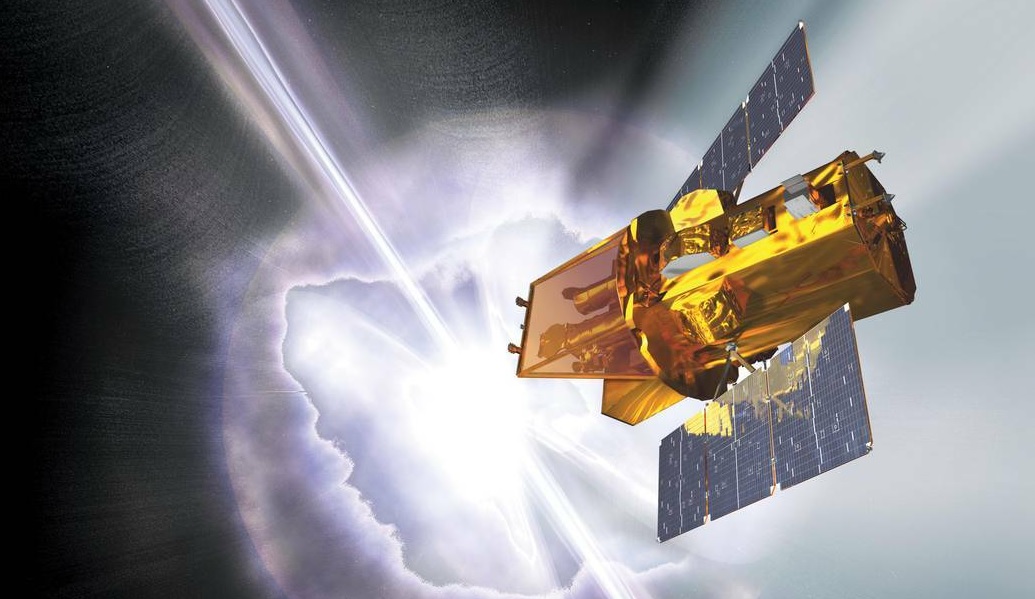NASA Halts Operations of Swift Gamma-Ray Space Telescope

Space News ,NASA :- NASA has paused the science observations made by its Neil Gehrels Swift Observatory. But don't worry, it's just a temporary pause.
The Neil Gehrels Swift Observatory is a space telescope that looks at some of the strongest bursts of radiation from the universe's most powerful cosmic events. These events are called "gamma-ray bursts." The telescope went into safe mode on March 15 because one of its three gyroscopes, which help it point toward objects in space, wasn't working well.
NASA noticed the gyroscope wasn't working properly a few months ago, and by mid-March, it was causing problems. The telescope was having trouble locking onto stars and couldn't make successful observations.
The Swift team is working on fixing the problem by updating the telescope's software. They hope to get it back to normal as soon as possible. But until then, the telescope won't be able to do much science.
What Swift Does
Swift has been in space for almost 20 years, observing the universe since it launched in 2004. Its main job is to look at gamma-ray bursts (GRBs), which are intense bursts of gamma rays, the highest-energy form of light. These bursts can last from a fraction of a second to a few minutes. Swift has to spot these bursts quickly so other telescopes on Earth can study them too.
Swift has three telescopes that look at different types of light: visible, ultraviolet, X-ray, and gamma-ray. By observing these bursts in different wavelengths, scientists hope to learn more about what causes them. Some of the possible causes include the collapse of a massive star, the birth of a black hole, or the collision of two neutron stars.
Discoveries of Swift
One of Swift's biggest discoveries happened in 2022 when it spotted a GRB nicknamed the "Brightest Of All Time" or the "BOAT." This burst was incredibly powerful, possibly one of the most energetic explosions since the Big Bang itself.
The BOAT burst was seen on October 9, 2022, and it was much brighter than other bursts Swift had seen before. It was at least 10 times more energetic and released photons with more energy than particles in the Large Hadron Collider, the world's largest particle accelerator. Scientists believe it was caused by a star 30 times the size of the Sun going supernova in the Sagitta constellation. This explosion happened so far away that its light had been traveling for 2.4 billion years before Swift saw it.
Swift's Latest Trick
Even though Swift has been in space for a while, it's still learning new things. In 2023, it detected a black hole in a galaxy 500 million light-years away. This black hole was eating a star similar to the Sun. This discovery was made possible by a new way of analyzing data from Swift's X-ray Telescope.
Phil Evans, an astrophysicist at the University of Leicester, said that Swift has adapted to new areas of astrophysics over its lifetime. With its new capabilities, it's doing even more exciting science.
Looking to the Future
Scientists are excited to see Swift back in action. They're eager to see what new things it will discover about the high-energy universe. Swift may be old in terms of space telescopes, but it still has a lot to teach us.


